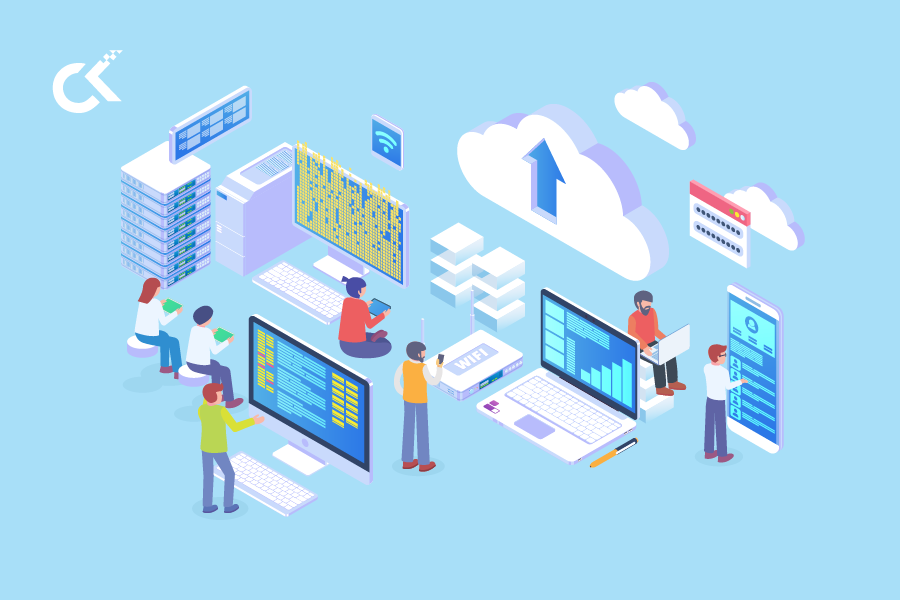Artificial Intelligence and Machine Learning are among the most significant technological developments in recent history. Few fields have “disrupted” our lives and businesses like machine learning has done in the last few years. However, many applications of machine learning technology go unseen. Many new models and use cases have been developed and implemented by organizations including the ones we touch quite frequently in our daily lives such as Spotify, Netflix etc. For instance, these companies use ML models to understand user behaviour patterns and preferences and make intelligent and individualised content recommendations based on past behaviour.
Truth be told, forecasting has been a part of business planning for quite some time. Back in the day, this was done using an estimating technique in which the last period’s values were used as a base to arrive at future forecasts. This method typically relied on patterns and recognizable sequences of events to forecast future events. This type of traditional forecasting is understandably basic and has its limitations. For one, it does not adjust the values or make any attempt to establish causal factors. It is also humanly impossible to take disparate sets of data factors over a large period and analyse them accurately.
On the other hand, Machine Learning based forecasting is based on a systematic statistical examination of data representing past observed behaviour of the system to be forecast, including observations of useful predictors outside the system. These innovations have been possible as many algorithms have been developed over the years, ranging from commonly used statistical algorithms like Autoregressive Integrated Moving Average (ARIMA), to complex neural network algorithms like CNN-QR and DeepAR+.
Introducing Amazon Forecast
Despite the rapid developments of AI/ML based forecasting, many companies are still not utilizing its power. Organisations usually park such initiatives, either due to lack of appreciation of its utility in business or due to lack of the required resources. Recognizing these limitations, Amazon launched ‘Forecast’ – a fully managed service by AWS that uses machine learning algorithms to deliver highly accurate forecasts. Now with Cloud computing and PaaS services like Amazon Forecast, these traditional limitations are being challenged in a big way. Companies can now easily embark on ML projects using the power of such PaaS services on the cloud, which almost gives access unlimited compute.
Working with Premier AWS Partners like Cloud Kinetics, can further accelerate the adoption by bringing in key elements of automation and visualisation as a value-add on top of the Forecast service, thus adding deep business relevance to such initiatives.
However, companies find that their needs are unique and specific. Therefore, where PaaS tools like Amazon Forecast are a great starting point, they usually need additional solutioning catering to the unique needs of each business case.
Driving an effective onboarding of a workload into Amazon Forecast.
As with any solution, successfully onboarding a workload into Amazon Forecast starts with a clear business problem definition. For example –
I want to forecast sales of products A, B and C for the next quarter by region in order to better optimize my quarterly sales and marketing spends.
Having a good problem statement makes all the difference when it comes to designing the solution.
Secondly, quality and quantity of input data and regular input data updates are crucial for Forecast to be effective. When we consider a machine learning solution, the accuracy of the results achieved is mostly directly proportional to the quality and quantity of input data provided. Therefore, it is advisable to provide maximum amount of time-series data (say 2 to 3 years) on the input side and support the data with related time-series data as well, in order to get the best results. In addition, regular updates of the input data helps the predictor models produce even more accurate results over time and this helps optimize the results achieved further.
Finally, it helps to have a collaborative solution development approach with an experienced partner. For maximizing the value that the Forecast service can bring, a mere usage of the Forecast service in isolation may not always be the most prudent approach. The ability of the team to align the entire solution footprint alongside the Forecast service surely yields measurable business value and results. As an Amazon Forecast Partner, Cloud Kinetics has already worked with many clients to provide an effective Forecast solution for their unique business requirements.
How can Cloud Kinetics Help?
CK has integrated Amazon Forecast into its Cloud Management Platform – Arcus. Through Amazon Forecast, our clients using Arcus platform can perform a detailed Cloud cost analytics and get a spend forecast for the next three months. If you are interested to structure and deploy a forecasting project with Amazon Forecast or want to leverage any other AWS Artificial Intelligence and Machine Learning service, get in touch with us at contactus@cloud-kinetics.com




